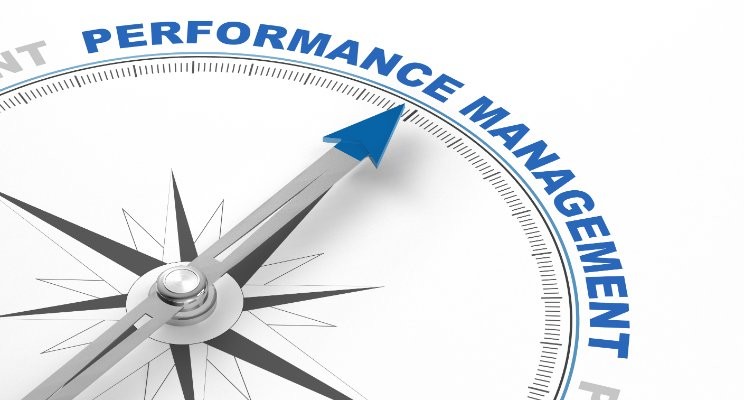
Overview
Supplier performance management is the initial step towards developing an efficient supply chain. It helps make sure that your suppliers meet the set expectations related to quality, cost, reliability, and compliance while on the other hand, aligning to high ethical and operational standards.
We provide an elaborate overview of supplier performance management, discussing its main components, the role of technology such as AI and LLMs, and the significance of consolidating data from ERP systems and third-party sources in a timely way.
What is Supplier Performance Management?
Continuous supplier performance management is defined as the follow-up and evaluation of supplier activities to ensure that they meet the minimum requirements set by your organization, primarily focusing on quality, cost, reliability, and compliance. SPM helps companies measure a supplier’s contribution to the supply chain while providing value for money in return with risk minimization.
Note that SPM is an ongoing process, where data is collected and analyzed, then feedback and improvements are made. Supplier performance management enables firms to achieve process efficiencies, reduce the cost of operations, enhance supply vendor collaboration and conform to legal provisions.
Key Components of Supplier Performance Management
1.Performance Metrics: Performance metrics are the framework of SPM since they determine the value of a supplier. The most common KPIs are:
- On-Time Delivery (OTD): This metric evaluates if orders are delivered on or before time by the supplier against the agreed date. Delays significantly lead toward disruption of the supply chain and, as a result, become one of the critical measures in SPM.
- Quality Score: Measures the quality of the goods or services being offered, normally measured by defect rates, product returns, or non-conformance reports. A low-quality score then increases the cost of operations and reduces customer satisfaction.
- Cost management: This evaluates cost effectiveness and compliance with agreement prices. It monitors if the seller is maintaining cost competitiveness and at the same time delivering the specified service or quality.
- Compliance and Risk Management: Checks that vendors and contractors conform to legal and other agreements for instance, sustainability standards or certifications or ethical procurement. Their failure exposes the organization to legal and reputational implications.
2.Data collection and analysis: SPM is dependent on data. This includes timely and accurate data gathered from various internal and external sources to the organization for the purpose of tracking down the suppliers’ performances. Data can be collected from:
- Internal systems: The procurement ERP system, and the inventory management tools offer some insights into supplier activities.
- Supplier-Led Data: Suppliers should supply performance reports, financial health assessments, and compliance certificates.
- Third-Party Data: External sources can provide financial health checks, market reputation, and risk indicators, helping you get a fuller picture of supplier reliability.
Good SPM systems also use scorecards for performance measurement and overall results of the suppliers’ performances against multiple KPIs.
3.Evaluation and Feedback: SPM is not only about data collection – it is also about continuous improvement. Frequent assessment of suppliers’ performance in terms of established KPIs, as well as actionable feedback keep the suppliers aligned.
For example, scheduled reviews (quarterly, bi-annually or annually) would be useful to assess supplier’s underperformance, provide feedback, and encourage working collectively on improvement strategies.
4.Risk Management: Supplier risk assessment checks financial health, operational resilience, geopolitical exposure and compliance. Systems that rely on third party information, for instance credit ratings or geopolitical exposure ratings, can offer early signals of potential disruptions.
Overview of supplier performance management and the relevance of AI and LLM
The role of technology in the current supplier performance management system is now growing significantly. Artificial Intelligence and Large Language Models have greatly impacted how suppliers should be managed, giving organizations more complex data-driven strategies.
AI-Driven Insights
AI can assess large volumes of supplier data in real time, identify changes in performance trends while also forecasting potential risks. Additionally, machine learning algorithms can make AI tools to offer predictive analysis on supply chain constraints, prices changes, and non-conformity by suppliers.
LLMs for Communication Analysis
Normally, the Supplier Management process includes ‘big data’ in the form of emails, reports and contracts that are unstructured in nature. Managers can utilize it to convey findings regarding the supplier’s behavior, communication gaps or indicators of performance disparities. For instance, critical clauses may be pulled out from the contracts and contradictions in communications may be pointed out. This confers the firm with authority in negotiations and checking adherence in contracts.
Predictive Analytics
Predictive methodologies are packed with AI, which forecasts the supplier’s future performance based on historical data records. This means that the supply chain can focus on those suppliers whose risks have not shown likelihood of disrupting a specific chain.
Integrating ERP Systems for Overall Supplier Performance Management
On the other hand, it must be stated that integrating your SPM system within an ERP system can add more value to performance management. ERP systems can track supplier activities as they bear sensitive data including purchase orders, payment records and inventory levels.
Key advantages of ERP integration
Real Time Data Accessibility: An integration of ERP gives real time access to performance-related data on order fulfillment, lead times, and payment accuracy. It reduces all manual collection of data and provides instant visibility into the performance of the supplier, hence enabling faster decisions.
Improved collaboration between teams: An integrated SPM and ERP improves collaboration across procurement, operations, and finance teams by giving a common platform for access and reporting of data. Internal team surveys are employed to provide performance evaluation, including input from key stakeholders within the organization.
Enhanced Risk Management: SPM integrated with ERP gathers the data on the company’s performance together with risk management metrics like missed payment or unfulfilled orders. This offers visibility into the credibility of suppliers.
Seamless Reporting: ERP integration automates report creation and helps share performance insights with the stakeholders. This is helpful for entities in delivering reports to the authorities.
Leveraging third-party data for third-party and supplier performance management
While internal data and ERP integration provide valuable insights, third-party data becomes a necessity for the proper understanding of supplier performance. Third-party sources provide added layers of information which may not be otherwise captured by your own internal systems.
Third-party financial health monitoring
Financial stability is a key component of supplier reliability. Accessing credit ratings, financial reports, and bankruptcy risk data from third-party sources can help you assess the long-term viability of your suppliers. Monitoring the vendor’s financial health is critical to prevent any interruption caused by insolvency or cash flow issues.
Market Reputation and Compliance Data
In addition to financial information, third-party providers can supply information about a supplier’s market reputation, environmental or labor compliance, and customer reviews. This information will help an organization determine if the supplier observes CSR (Corporate Social Responsibility) initiatives and, thereby, adheres to ethical standards.
Third-party data integration into the SPM system gives a 360-degree view of each supplier, for informed decision-making.
Best Practices in Supplier Performance Management
An effective supplier performance management system requires more than just tracking KPIs. The following best practices ensure success:
- Setting clear performance goals at the outset of the supplier relationship is crucial. This includes KPIs definition, delivery timelines, compliance standards, and cost targets. These specifications are clear communication channels for suppliers to meet your goals.
- AI-enabled SPM solutions automate data capturing and analysis. These tools offer real time analysis to enable organizations to track their suppliers as an extra edge over manual approach.
- Supplier communication facilitates the creation of a strategic understanding between organization and suppliers. Coherent feedback stimulates cooperation, people may be more specific, and any concerns can be solved immediately, trust and constant development are important.
- SPM is an ongoing process. It is important to constantly check on your KPIs and make changes to the performance benchmark as deemed necessary. Encourage suppliers to
develop management self-assessment programs and jointly build key success improvement plans.
Conclusion
Supplier Performance Management is unavoidable; Setting clear performance metrics, integrating ERP systems, utilizing AI and LLM technologies, and leveraging third-party data are the basics for optimizing supplier relationships.
In today’s complicated global supply chain, it is important to ensure suppliers meet your standards for quality, cost, and delivery.
Ready to take action?
Advancement to supplier performance management is vital to outperform the competition. Using the right data, technology, and insights can improve your relationships with suppliers and build a successful business.
Want to make a difference?
Explore tools that connect your ERP data, use AI to give you smart ideas, and track third-party suppliers. These tools can help you make your supplier network even better.
Rahul Asthana has a PhD in Operations Management from the Anderson School at UCLA. He has 25 years of experience in supply chain management, starting his career in IBM working in supply chain operations. He then moved into product management and product marketing of supply chain software while at SAP and Oracle. He manages product strategy and product management at Gainfront. In terms of hobbies outside of work, he really enjoys tennis. Follow Rahul Asthana on Linkedin!
